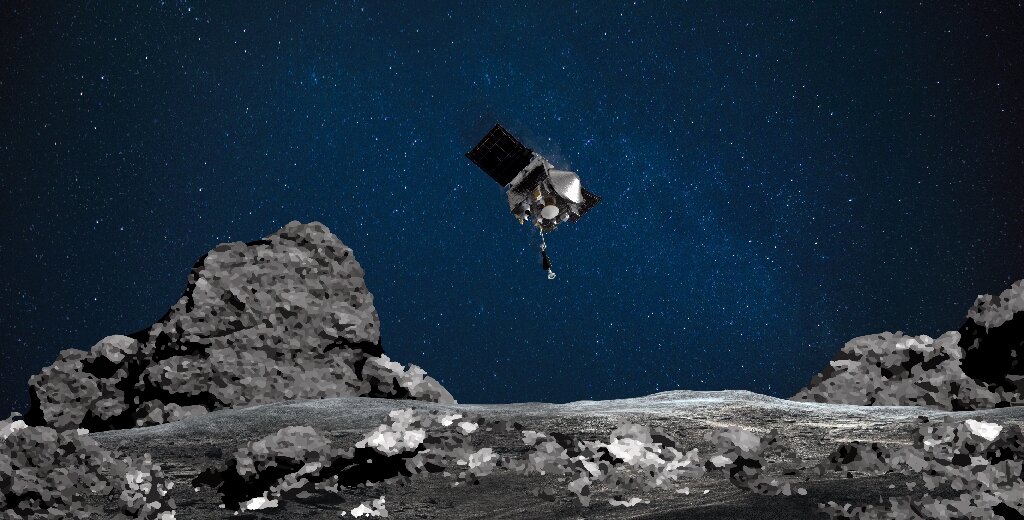NASA’s robotic spacecraft Osiris-Rex descended to asteroid Bennu’s boulder-strewn surface on Tuesday in an attempt to collect a handful of rock samples.
Japan’s Hayabusa 2 probe which is on its way to home is the first and the only probe till now to collect some dust from another asteroid Ryugu.
About Bennu
101955 Bennu is a carbonaceous asteroid in the Apollo group discovered by the LINEAR Project on 11 September 1999. It is a potentially hazardous object. It has a cumulative 1-in-2,700 chance of impacting Earth between 2175 and 2199. It is named after the Bennu, the ancient Egyptian mythological bird associated with the Sun, creation, and rebirth.
NASA with the current probe has attempted to grab at least 60 grams of Bennu. On Tuesday, the probe sent back confirmation of its contact with asteroid Bennu more than 200 million miles away.
But, NASA scientists said that it could take a week to know how much, if anything, was grabbed and whether another try will be needed. The spacecraft can make up to three touch-and-go maneuvers in case it comes up short. Regardless of how many tries it takes, the samples won’t return to Earth until 2023 to close out the $800-plus million mission. The sample capsule will parachute into the Utah desert.
Bennu is just 490 meters (1,600 feet) in diameter and thus its gravity was too low for spacecraft to land. As a result, it had to reach out with its 3.4-meter robot arm to grab samples from Bennu.
Heather Enos, deputy scientist for the mission described this event as “kissing the surface with a short touch-and-go measured in just seconds”.
Osiris-Rex which is a van-sized spacecraft was launched from Cape Canaveral back in 2016 and reached the asteroid in 2018. After nearly two years of orbiting Bennu, the probe found the current location called Nightingale Crater to have the biggest patch of particles small enough to be swallowed up.
After confirming that the coast was clear, the probe closed the asteroid for the sampling. The spacecraft was programmed to shoot out pressurized nitrogen gas to stir up the surface and suck up any loose pebbles or dust. Contact would last around 10 seconds, with the spacecraft quickly backing away.
By the time controllers got confirmation, the action already happened 18.5 minutes earlier, the time it takes radio signals to travel each way between Bennu and Earth.

